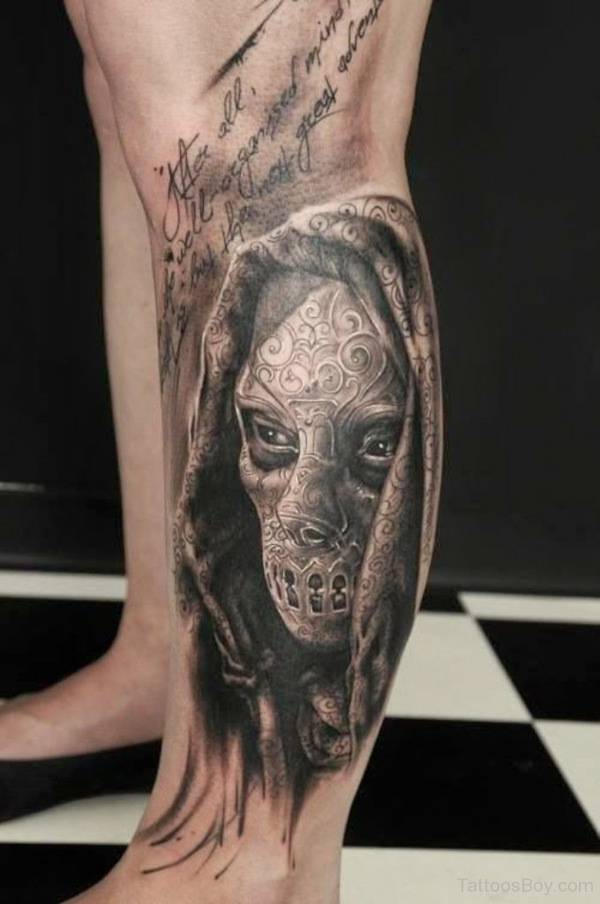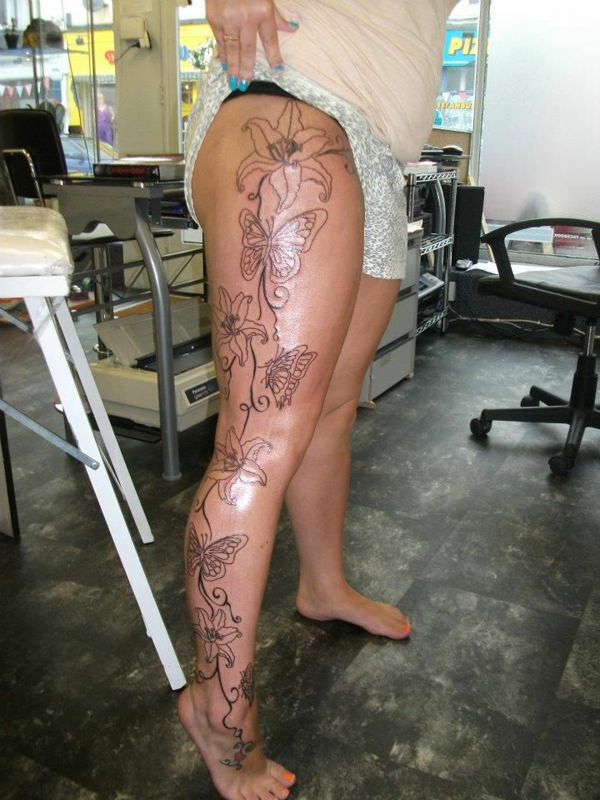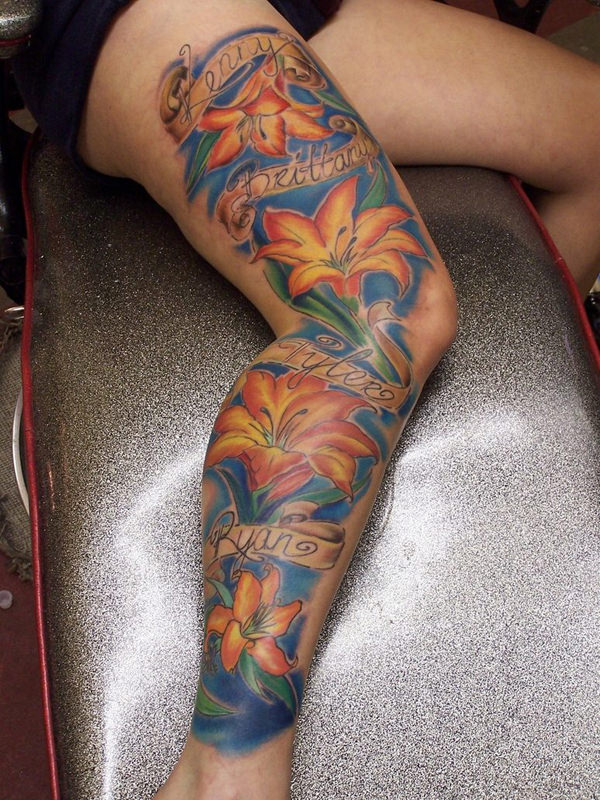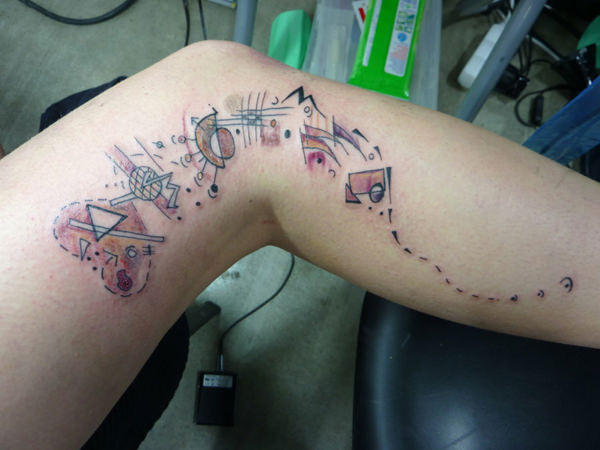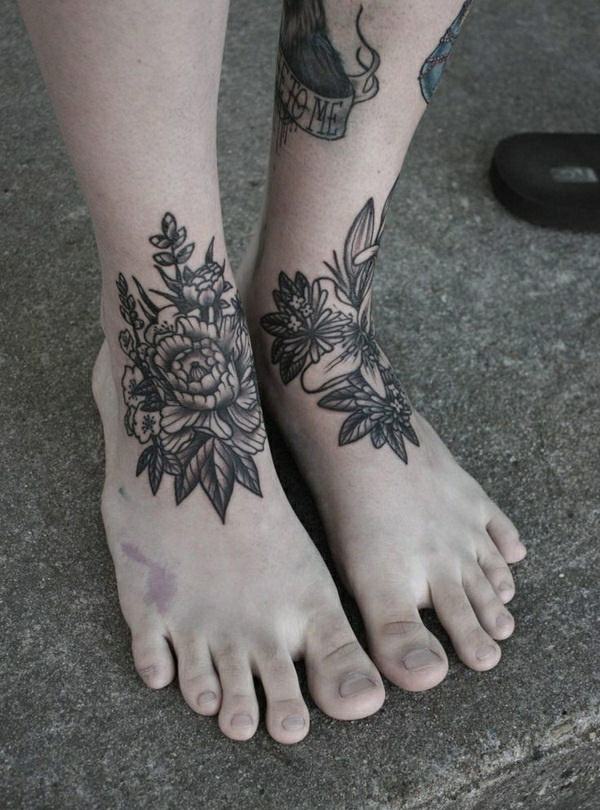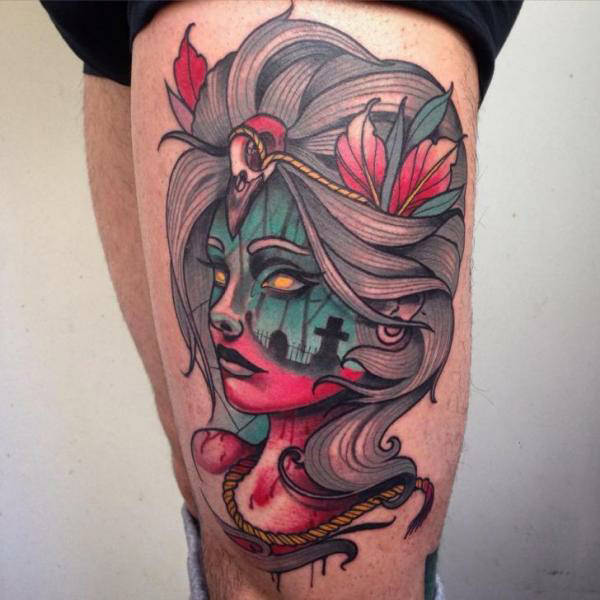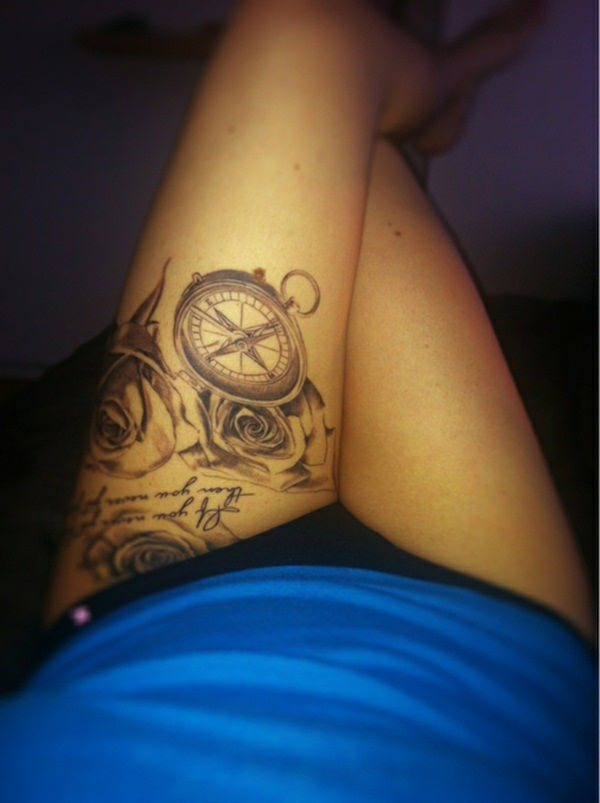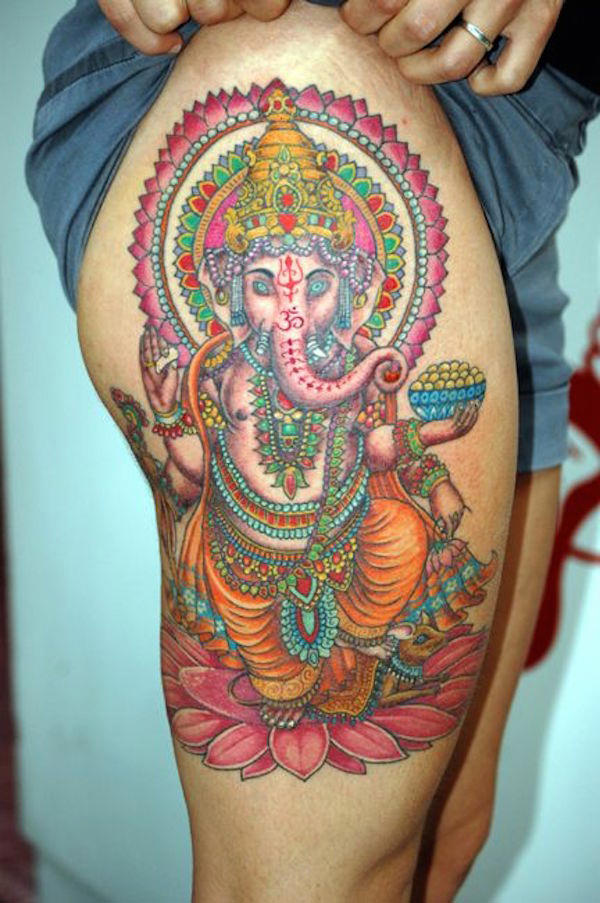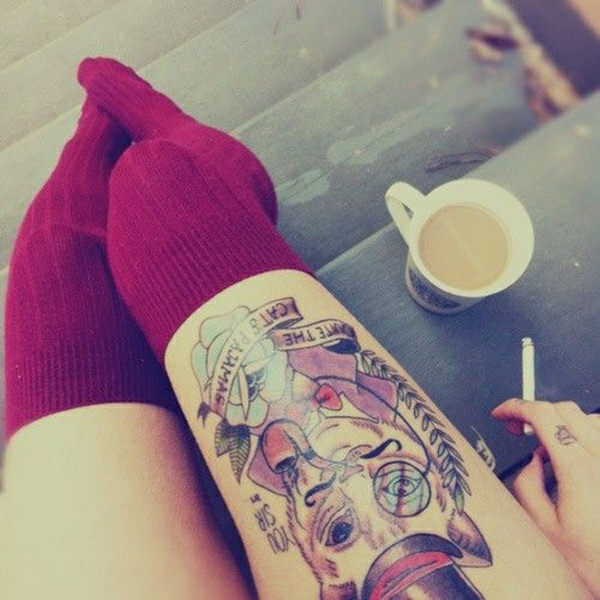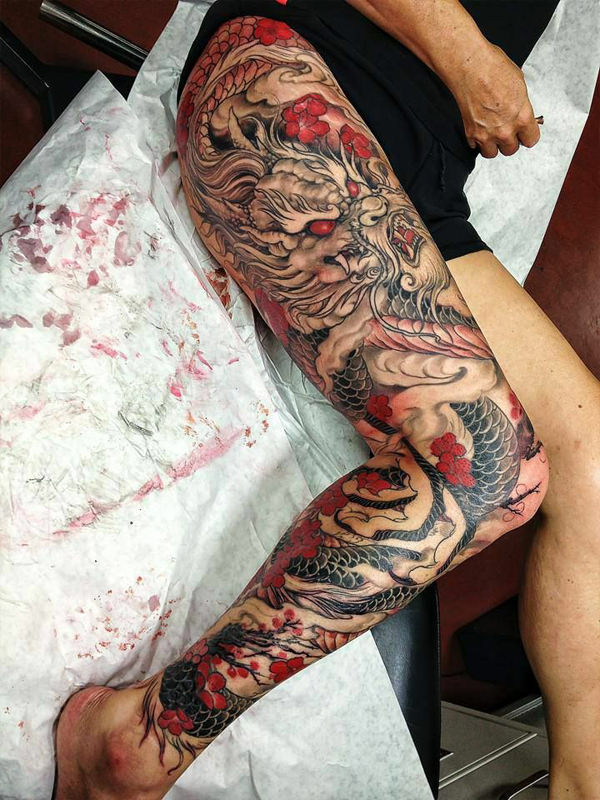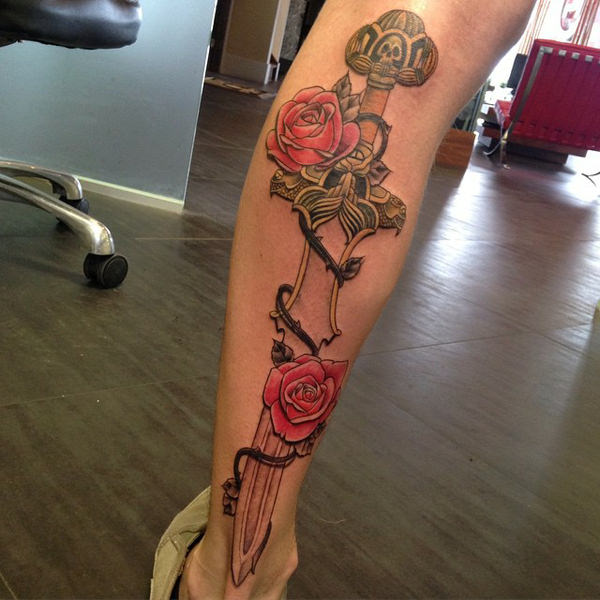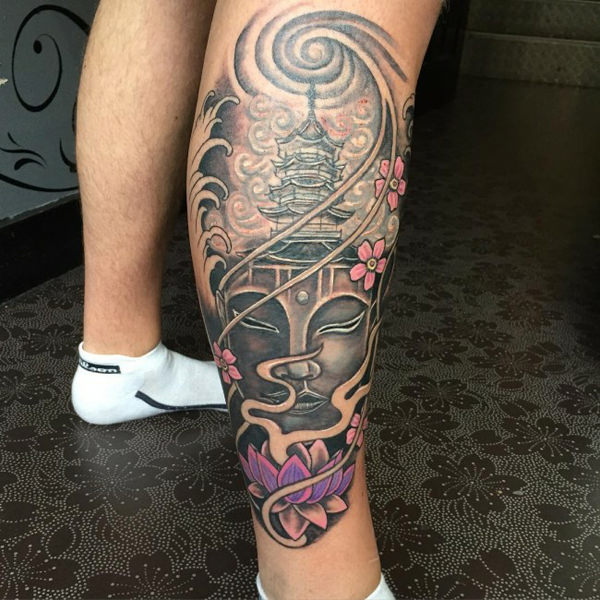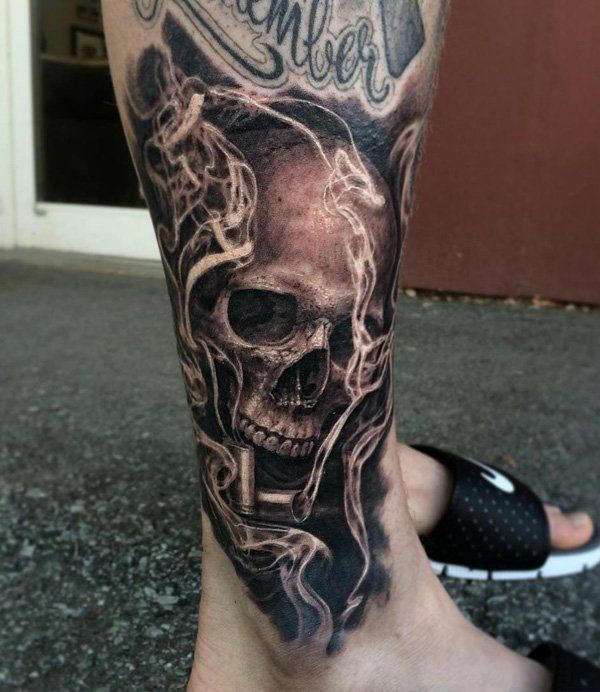Leg tattoos offer different levels of satisfaction when viewed from the point of view of a man or a woman. Girls accentuate their sexiness and being cool by displaying tattoos on their thighs, while boys project machismo and angst with tattoos decorating their lower leg, preferred spot by men. Men that are more adventurous decide to cover with decorations, the three main tattooing areas of the entire leg, namely the thigh, the leg and the foot. It is rare to see women with their entire legs covered with tattoos.
The large areas of the leg make it a possible canvass for a wide variety of tattoo artworks and style. Deciding which design to go for depends on various factors such as gender, personality preferences and tattoo equipment.
Traditional Leg Tattoos
Traditional tattoos paved the way to modern day tattooing. To communicate the directness of styling on these types of tattoos, many people choose solid black outlines over colored designs. The discipline and skill to execute the design with minimum detail and impeccable precision, is required to give visual impact and deep meaning to the timeless traditional leg tattoos.
The choice of images has no strict rules, but subjects like roses, hearts, certain birds and cherry blossoms are standard for women, while nautical, eagles, daggers, and skulls are fit men. Entire legs or leg parts are not difficult to mark with traditional design because of the wide choice of objects, with different sizes, are available.
Tribal Leg Tattoos
Tribal leg tattoos contain signature solid geometric shapes, symmetrical patterns, and black color. The origin of ancient tribal drawings includes American Indians, Polynesians and Micronesians. The beauty of the tattoo anchors in its simplicity, and the integrity of the tattoo are better without the drastic modifications.
Japanese Leg Tattoos
Japanese tattooing dates back to 10,000BCE as a sacred practice among serious tattoo enthusiasts and as mystical art to the average person. The tattooist at the time developed a style that is elaborate and richly colorful. They adhered to a strict set of rules, followed by professional tattooist until today. Proper positioning, direction, image choice, background rendering and coloring standards were set to preserve the identity and integrity of the tattoo genre.
Japanese leg tattoos are attractively identifiable in colorful designs and rich Japanese subjects like dragons, koi fish, cherry blossoms, lotus flowers and geishas
Realistic Leg Tattoos
Imagine your legs looking like realistic paintings. Realistic leg tattoos require a high degree of tattooing skills, more advanced equipment and techniques, and a wide range of color palette. Oftentimes based on landscapes, more details and subtle colors are required to mimic natural mountains, trees and skies. The proper execution of fine lines, intricate shadings, and accurate color renditions takes time, making the tattoo relatively more expensive to own. Brisbane in Australia is the bedrock of realistic tattoo style.










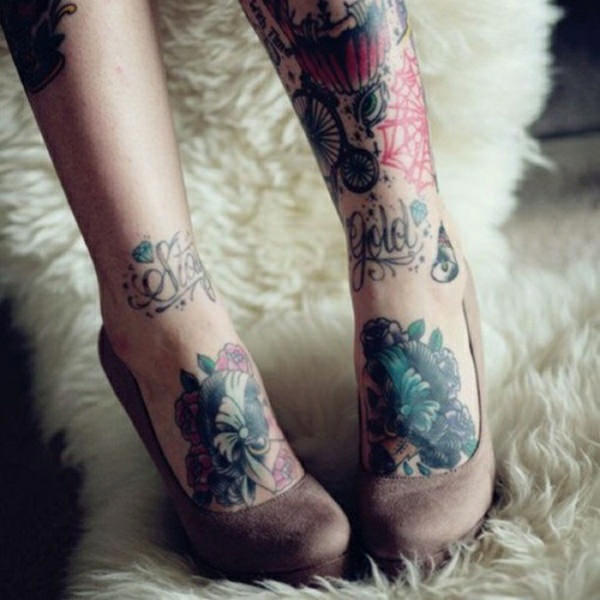


Script Leg Tattoos
This type of tattoo is very popular, and tattoo enthusiasts are beginning to appreciate more the simplicity and the meaningfulness of the script design. Elaborate and impressive lettering fonts rendered in black and any bold color are highly popular amongst tattoo clients and onlookers. Ambigram, the novel and imaginative art of incorporating two words into a one-worded design element, suits script leg tattoos perfectly. These tattoos usually use names, popular subjects, birthdates, life maxims and meaningful quotes.
Biomechanical Leg Tattoos
Biomechanical leg tattoos is a product of modern trends and innovations in the tattoo industry. New and modern techniques and equipment allow intricate and precise tattoo rendering required by the biomechanical design. The availability of a variety of colors allows more creativity to the artist. The design uses robot elements in combination with illustrations of internal body parts, including muscles and bones to produce astonishing, if not surreal images. The colors are bright and vivid making the design appear to be alive and popping out.
Meaning of Leg Tattoos
Leg tattoos are generally body ornaments that mirror the bearer’s personality. As a decoration for some women who seek attention, these tattoos deserve several looks for viewers, and the attention allures the opposite sex to the body part and eventually to the bearer. For men, the pride of ownership is strong and the inspirational value is solid. Both sexes view the leg tattoos as a representation of their personalities and the choice of subject is crucial to that goal.
Ideal Placement of Leg Tattoos
Leg tattoos are often on thighs, legs, feet or wrapped around the entire legs, which is comprised b the three sub-sections, the thigh, leg and foot. The thighs and legs can accommodate both large and small objects that serve as the subject, while the feet can fit only the small ones.





















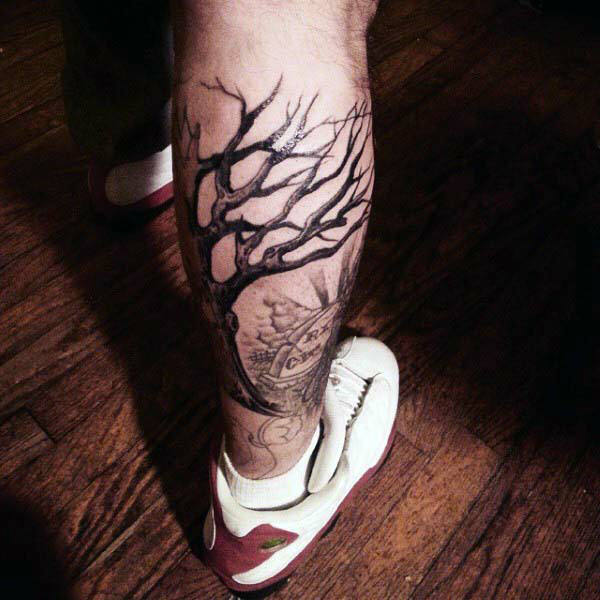
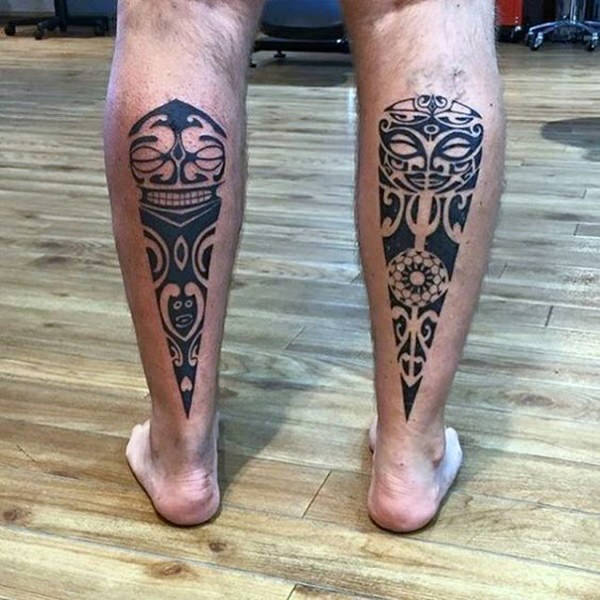
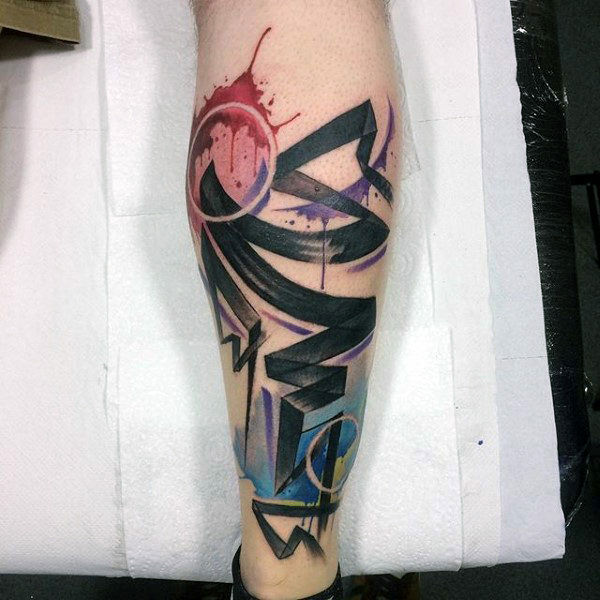


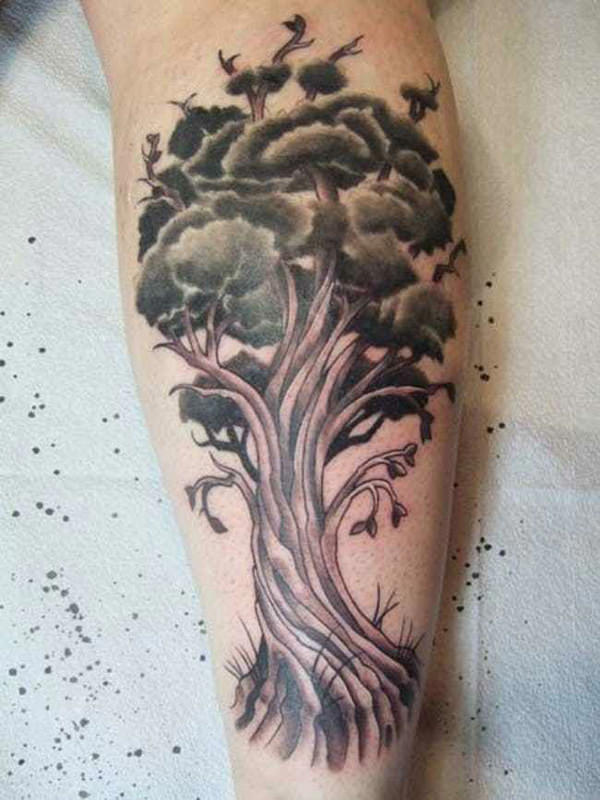

Preparation Tips for Leg Tattoos
Preparation starts the day before the tattoo session, meaning avoiding alcohol intake and making sure that you are in good shape, without fever or colds. Like any other tattoo preparation, you should first anticipate the complexity of the design in order to set a free day with estimated procedural hours. Prepare simple and worthwhile activities to do during long tattooing so as not to get bored and uneasy. Books and gadgets are excellent during long waiting hours.
Eating a heavy enough meal before visiting the tattoo shop gives the body extra energy to stand the grueling and painful picking of needles. Moreover, just to make sure, try to bring snacks and drinks.
Aftercare products like ointments and gauze are tremendously helpful, although just optional. Some shops make these items available for their clients as an optional offer. Ointments ease the swellings and helps avoid drying of the skin.
Average Service Cost & Standard Prices for Getting Leg Tattoos
It is a good idea for persons like you, wishing to own an attractive tattoo, to first have an idea on how much you could be spending for your tattoo. Small and simple tattoos are easy to price and they will usually cost you from $40 – $60 flat rate. These tattoos should be very limited in color. Big, colorful and complicated tattoos cost significantly higher, mainly because of the much longer time it takes to finish them. For this reason, large and elaborate tattoos cost is usually in time rate basis, ranging from $100 to $300 based on the following:
- Reputation of the tattoo artist – The works of good tattooists easily spread by word of mouth. Try working with recommended artists by your trusted friends or acquaintances. Never try your luck with an unknown tattooist only because they charge lower. It will do you harm than good.
- Size of tattoo – The bigger the size, the more time it takes to complete the tattoo. Large, complicated tattoos on backs and chests will cost at least several hundreds of dollars.
- Design of tattoo – Designs with fine details and complicated backgrounds cost the most since they are very time consuming.
- Location of tattoo shop – A tattooist in big cities will charge more than an artist in small towns.
- Number of colors to be used – Multicolored tattoos takes more time to render, and are therefore, more expensive.
- Placement of the tattoo – The human body contains nerves with high sensitivity receptors. Some parts of the body have more receptors than other parts. The more sensitive the part is, the more expensive the tattoo costs. Neck, sternum, genitals, feet and hand are considered as sensitive while shoulder blades, buttocks and outer thighs as less sensitive, and less expensive. Full leg tattoos contain both sensitive and less sensitive areas.
Maintenance Tips After Getting Leg Tattoos
Leg tattoos are located in the lower extremity and are prone to lower blood circulation. The leg is constantly carrying body load while in a standing position. The lower parts of the entire leg, which include the feet, are bony and are painful to pick during tattooing. For these reasons, instant care right after the tattoo procedure is more elaborate and crucial. Negligence will cause extreme soreness to the wounded area of the skin, which is a clear sign of infection.
To get better blood circulation after the tattoo procedure, immediately drink lots of water and make sure that your legs are raised up using a couple of pillows when lying down. Avoid standing for long periods to prevent stress and irritation to affected wounds of the legs.
Remember to wash your tattoo wounds on a daily basis, at least twice a day, using mild antibacterial soap and lukewarm water. Using ointments to restore cracked skins is highly recommended. Remember to dry your wounds immediately after you wash them, which you must do with utmost care so you don’t scratch your tattoo unnecessarily. The healing time usually lasts for two weeks. Tattoos that did not heal properly will have distorted images and poor color.
Healed tattoos also need aftercare attention. The number one cause of fading with regards to tattoos is exposure to sunlight. Highly faded tattoos may require some retouching, which can be either paid or free depending on your arrangement with your artist. However, prevention is more practical and less disturbing. By simply avoiding direct sunlight and staying in shaded areas, you are keeping your tattoo protected. Clothes that cover the tattoo areas are effective tattoo protectors, as well as using sunscreen products when necessary.
Does this article spark interest enough for you to contemplate on a leg tattoo? Share your thoughts here by commenting.
